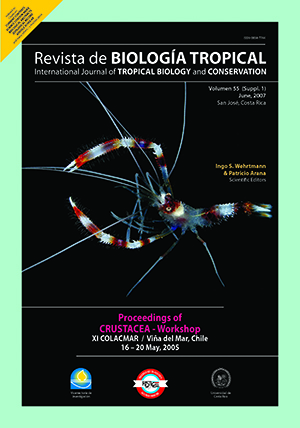Resumen
Population and reproductive biology were studied in three populations of the crab Uca burgersi Holthuis, 1967, in the Indaiá, Cavalo and Ubatumirim mangrove forests (Ubatuba, São Paulo State, Brazil). Crabs were collected during low tide (August 2001 through July 2002), by digging the sediment, with a standard capture effort (two persons for 30 min.). Carapace width was measured, and gonad developmental stage was recorded from all specimens. U. burgersi was most abundant in the Cavalo mangrove, where the largest male was found. Juvenile crabs were found year-round at all three sites. However, the ratio of ovigerous females was very low, even null in the Cavalo mangrove. The gonad development rate indicated that U. burgersi was reproducing continuously, but more intensively during spring and summer, with recruitment occurring in winter. The synchrony between the populational and reproductive biology in the three areas showed that local features were not the limiting factors. It is suggested that this species is a habitat generalist.##plugins.facebook.comentarios##

Esta obra está bajo una licencia internacional Creative Commons Atribución 4.0.
Derechos de autor 2007 Revista de Biología Tropical
Descargas
Los datos de descargas todavía no están disponibles.






